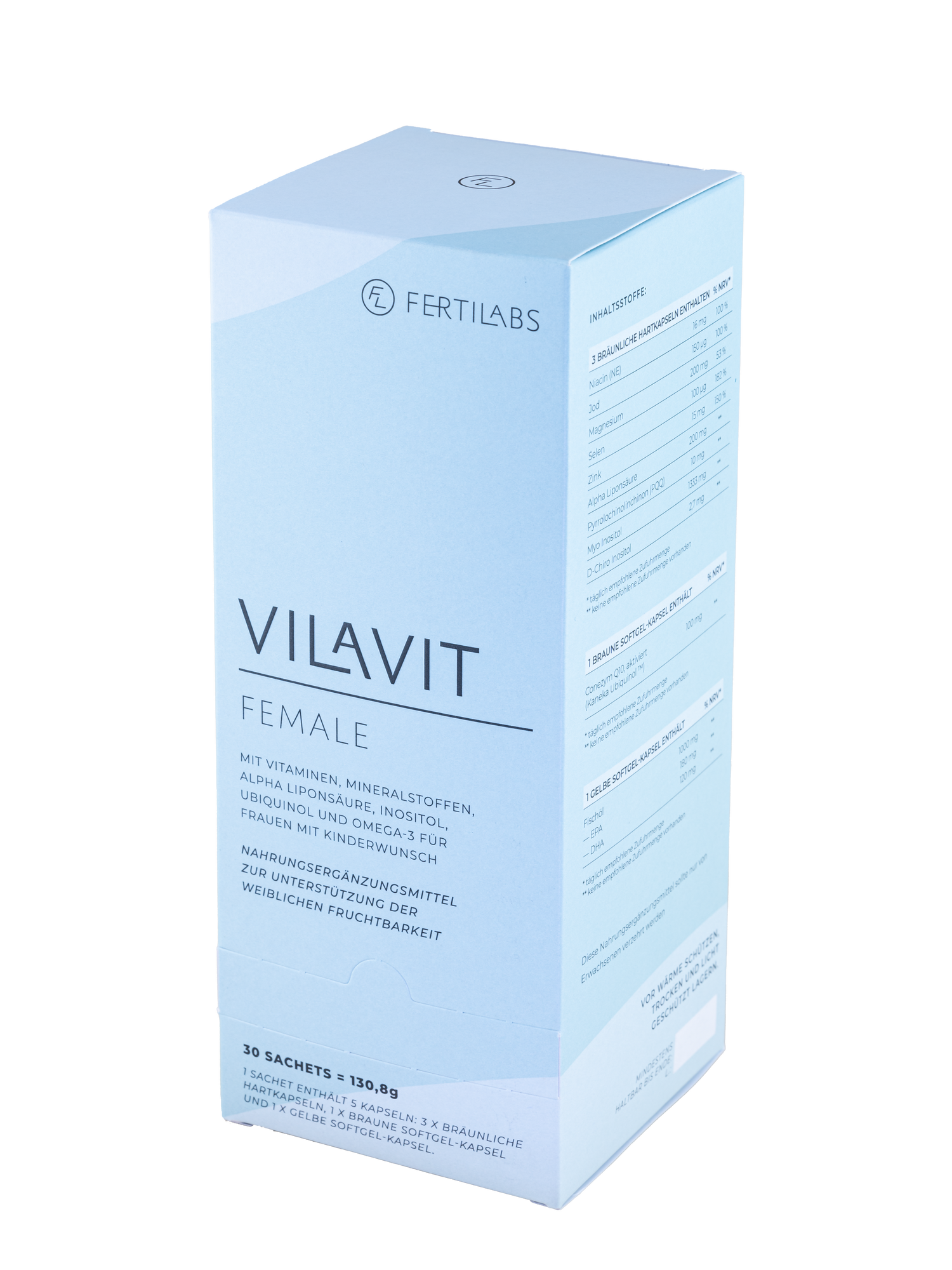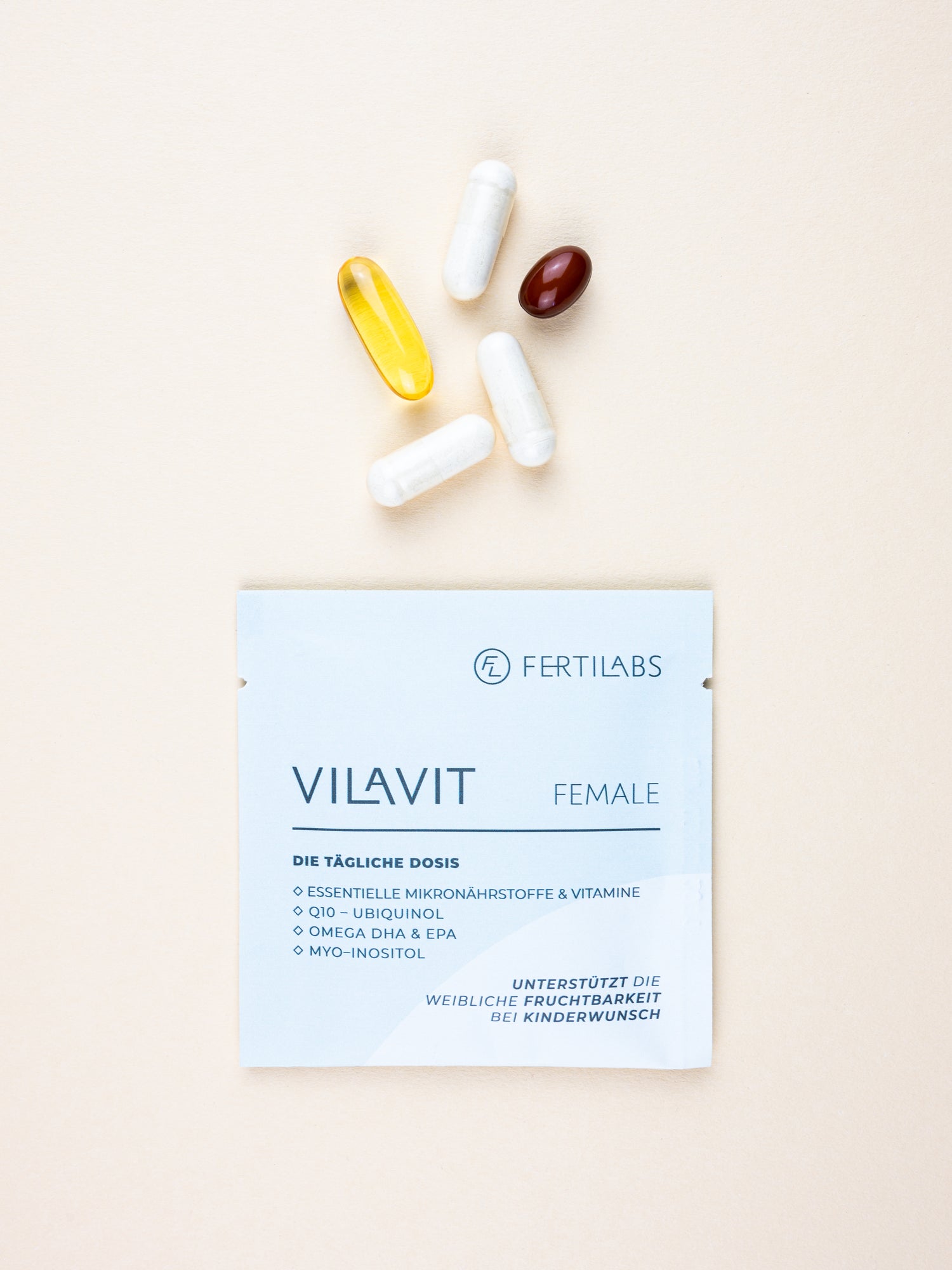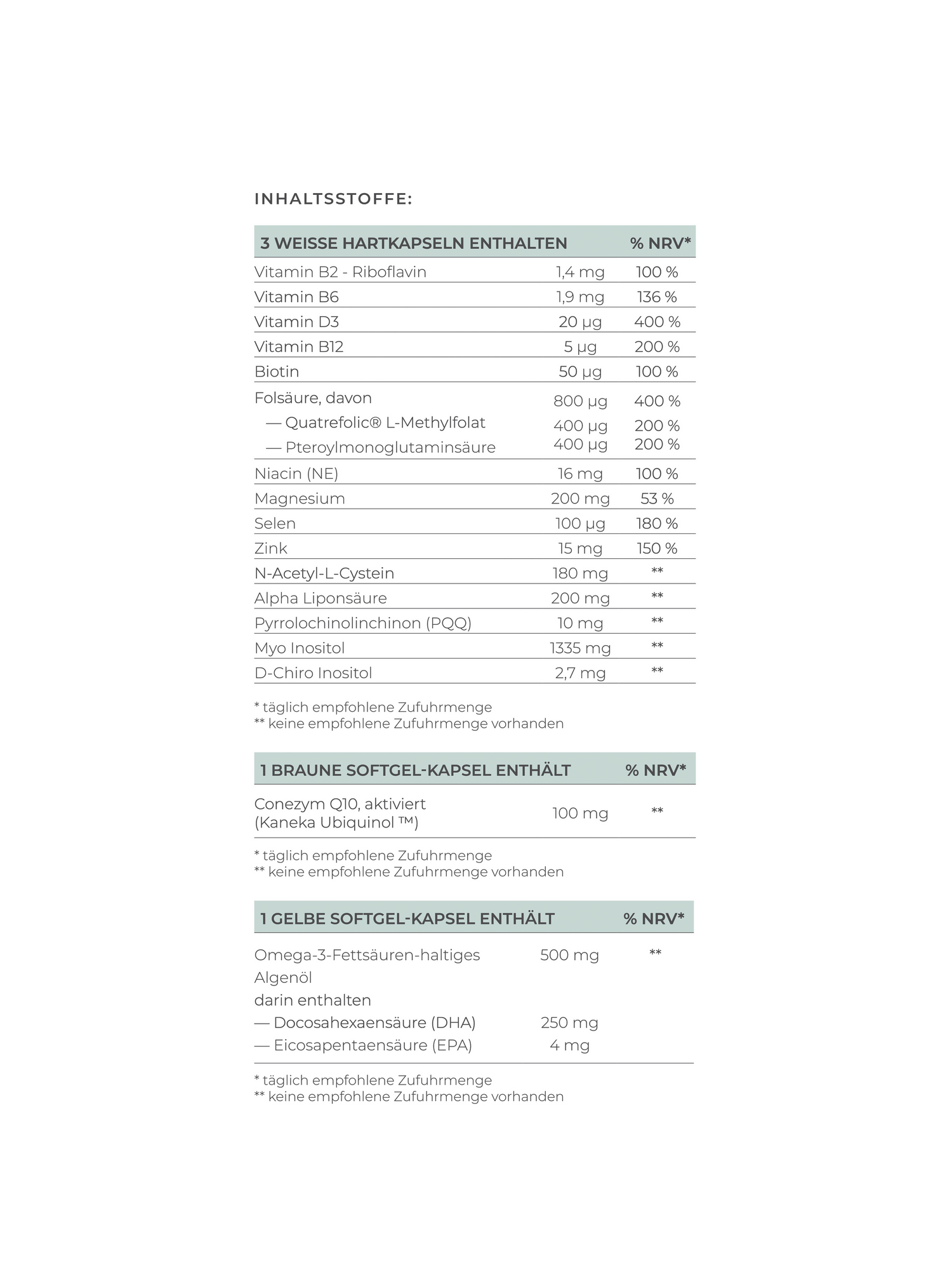
Female infertility
According to the World Health Organization (WHO), infertility is defined as a condition in which a woman, despite having regular, unprotected sexual intercourse on her fertile days, does not become pregnant within one year.
Causes of female infertility
Endometriosis
Endometriosis is a condition where the uterine lining grows outside the uterus. Possible consequences include inflammation and reduced fertility. Approximately 5-10% of all women suffer from endometriosis. Fertility is not only reduced, but the risk of complications during pregnancy and the likelihood of miscarriage are also increased.
Symptoms: For many women, the shed tissue from these growths, known as "endometrial implants," can flow out unnoticed and without pain. However, in other women, the remaining tissue can lead to inflammation, cysts, and adhesions, causing varying degrees of menstrual pain and pain in the area of the implants. These pains are often experienced as cramps and may be accompanied by nausea, vomiting, or diarrhea.
Polycystic Ovary Syndrome (PCO Syndrome)
Polycystic Ovary Syndrome (PCOS) is one of the most common hormonal disorders in women of childbearing age. In Europe, 5-10% of women are affected, often without being aware of it. While the name suggests "many cysts," there are actually many follicles (egg sacs) present that cannot mature due to a lack of hormones. PCOS often involves insufficient follicle-stimulating hormone (FSH) and excessive luteinizing hormone (LH). Due to the lack of FSH, the follicles do not mature, ovulation does not occur, and no progesterone (corpus luteum hormone) is produced.
Cycles in affected individuals are typically very long, and menstruation is rare or absent. 75% of women with PCOS also have an increased insulin resistance. The elevated insulin levels required for glucose uptake stimulate androgen production in the ovaries, leading to an increased concentration of male hormones (androgens).
Symptoms: PCOS is characterized by irregular or absent menstrual periods. Often, ovulation does not occur. Triggers can include mild overweight and an elevated level of male hormones (androgens). Other symptoms include acne and increased body hair.
Blocked fallopian tubes
The fallopian tubes connect the ovaries to the uterus and are crucial for fertilization. They facilitate the transport of eggs from the ovaries to the fallopian tube ampulla, where they can be fertilized by sperm. However, fallopian tubes can become blocked, adhered, or occluded due to inflammation and infections (often Chlamydia or Gonorrhea) or conditions like endometriosis. When the fallopian tubes are damaged or completely blocked, the transport of the egg or embryo becomes difficult or impossible.
Assessment of the permeability of fallopian tube can be done through a laparoscopy or a specialized ultrasound examination. In cases of fallopian tube blockage, in vitro fertilization (IVF) is often recommended as an alternative method to achieve pregnancy.
Hormonal disorders
Hormonal disorders are often identifiable by changes in the menstrual cycle. Symptoms can include the absence of bleeding, irregular periods, or the occurrence of intermenstrual and spotting bleeding. Thyroid dysfunction is often a cause of infertility. Thyroid hormones influence the menstrual cycle, female fertility, and the brain development of the unborn child.
Hypothyroidism (Underactive Thyroid)
Causes: Often Hashimoto's Thyroiditis
Symptoms: Fatigue, dry eyes, hoarseness, constipation, or weight gain
Impact on Female Fertility: Cycle disturbances, prolonged cycles, infrequent bleeding, or ovulation, miscarriages
Hyperthyroidism (Overactive Thyroid)
Causes: Often Graves' Disease
Symptoms: High blood pressure, heart rhythm disturbances, nervousness, weight loss, diarrhea, excessive sweating, sleep disturbances, hair loss, fatigue, mood swings
Impact on Female Fertility: Cycle disturbances
Hyperprolactinemia (Elevated Prolactin Levels)
Causes: Often hypothyroidism, medications (antidepressants), stress
Impact on Female Fertility: Cycle disturbances, no or infrequent egg maturation
Hyperandrogenism (Elevated Male Hormones)
Possible Causes: Polycystic Ovary Syndrome (PCOS), Androgenital Syndrome (metabolic disorder), ovarian tumor
Impact on Female Fertility: Lack of egg maturation and absent ovulation
Luteal Phase Deficiency (Progesterone Deficiency)
Symptoms: Spotting during the second half of the cycle, a too-short second half of the cycle, sleep disturbances
Impact on Female Fertility: Problems with embryo implantation. Progesterone is responsible for the implantation of the fertilized egg.
These hormonal imbalances can significantly affect female fertility and may require medical treatment or intervention to address and improve the chances of conception. It's essential for individuals facing fertility challenges to consult with a healthcare professional for proper evaluation and guidance.
Myomas & Polyps
Myomas are common benign lumps in the uterus. Nodes within the uterine cavity or the uterine wall can make it difficult for an embryo to implant. Depending on their size, they can be removed through minimally invasive surgery.
Polyps are benign and mostly harmless lumps of the uterine lining. They often shed with the next menstrual period. However, if a polyp is situated unfavorably, it can impact fertility. Polyps can be removed through a procedure called dilation and curettage (D&C).
Symptoms: Myomas or polyps are frequently not noticed, and they may not cause any noticeable symptoms.
Malformation of the uterus
The uterus is an inverted pear-shaped muscular organ, a smooth cavity lined with mucous membrane in which an embryo can grow. Any malformation of the uterus can affect fertility. There are different types of malformations:
Arcuate uterus: The heart-shaped uterus is the mildest type of malformation. The upper part of the uterus has a small indentation that makes the uterus appear heart-shaped. It does not appear to affect female fertility or implantation.
Uterus septus: A partition of varying length and thickness is found in the uterus. This can negatively impact fertility and increase the risk of miscarriage.
Malformations can be treated surgically, making natural pregnancy possible.
Early menopause
Premature menopause is the permanent cessation of the menstrual period before the age of 40. It occurs when the ovaries no longer release eggs regularly, and ovulation stops. Premature menopause is accompanied by hormonal changes in the female body.
Symptoms: While some women may not experience any symptoms, others may suffer from typical menopausal symptoms such as hot flashes, mood swings, and night sweats.
Possible causes: Genetic abnormalties, autoimmune diseases, viral infections, surgical removal of the ovaries and uterus, chemotherapy or radiotherapy, toxins such as tobacco.
Premature menopause can have a significant impact on a woman's reproductive health and overall well-being. It's important for individuals facing this condition to consult with a healthcare provider for proper evaluation and management.
Disorders of the immune system
The cause of female infertility can also be due to a disrupted immune response in the female body. The body's own immune system identifies the embryo as a foreign entity and fights against it as an intruder.
Diagnosis of female infertility
Diagnosing the cause of infertility is crucial for selecting the appropriate treatment approach. Here are some diagnostic methods:
Medical History (Anamnesis): It's important to gather personal health information, including the regularity of the menstrual cycle, any potential gynecological conditions, prior surgeries, and medications.
Gynecological Examination: During a gynecological examination, initial signs of conditions such as endometriosis, myomas (fibroids), and ovarian cysts can be identified.
Ultrasound Examination: Ultrasound can be used to examine important aspects of the uterus, including its structure, position, size, and the presence of conditions like myomas, polyps, or ovarian cysts. Ultrasound is also relevant for monitoring the maturation of follicles (egg sacs) and the uterine lining, as well as tracking the menstrual cycle.
Hormone Levels: Since hormonal imbalances are often a cause of fertility issues, testing hormone levels is advisable. Hormone status, as well as changes throughout the menstrual cycle, provide insight into female fertility. Hormone levels can also determine the ovarian reserve. Important hormones to test between the second and fifth day of the cycle include FSH, LH, TSH, estrogens, prolactin, and androgens. In the second half of the cycle, progesterone and estrogen levels may be relevant.
Tubal Patency Testing (HyCoSy): Using ultrasound technology (Hysterosalpingo-Contrast-Sonography, "HyCoSy"), the patency (openness) of the fallopian tubes can be checked with minimal discomfort. During HyCoSy, an echo-rich foam is introduced into the uterine cavity via a thin catheter. The patency of the fallopian tubes on both sides can be assessed and monitored via ultrasound. The advantages of HyCoSy include lower radiation exposure compared to the previously common hysterosalpingography (HSG) and its non-invasive nature compared to laparoscopic surgery.
Laparoscopy: When there is suspicion of adhesions, blockages, or endometriosis, diagnosis can be performed through laparoscopy (keyhole surgery). Under anesthesia, a laparoscope, a tube-like instrument, is inserted into the abdominal cavity through a small incision. This instrument provides a precise view of the internal reproductive organs, which can be displayed on an external monitor.
Endometrial Biopsy (for Implantation Failure): An examination of the uterine lining can provide information about natural "killer cells" (NK cells) and plasma cells. During an endometrial biopsy, small tissue samples of the uterine lining are collected using a catheter and analyzed under a microscope.
Hysteroscopy: In cases of suspected uterine abnormalities or changes in the uterine lining, hysteroscopy can be used for further diagnosis and, simultaneously, for therapy.
These diagnostic methods help healthcare providers identify the underlying causes of fertility challenges, allowing them to tailor appropriate treatment options to address the specific issues identified.
The path to parenthood
The cause of infertility is crucial to identify the optimal treatment option. Treatment methods include cycle monitoring, hormonal stimulation, insemination, in vitro fertilization and ICSI.
Cycle monitoring
The gentlest method of getting pregnant is through cycle monitoring. Since the fertile days are close to ovulation, it is crucial to know it occurs. Cycle monitoring can be done independently for those with regular cycles, but fertility clinics often provide support through ultrasound and hormone diagnostics. This allows for monitoring of follicle maturation and prediction of ovulation. Intercourse is recommended just before ovulation, and pregnancy can occur naturally through this method.
Hormonal stimulation
In the first step, the female cycle is observed. The important question is whether ovulation takes place. If this is not the case, it often has hormonal causes, such as PCO syndrome, a thyroid dysfunction, increased male hormones or an increased prolactin value. Ovaries can be stimulated with hormone treatment, which can normalize the menstrual cycle. Once a regular cycle is restored, conception can occur naturally at home.
Intrauterine insemination (IUI)
Insemination is a gentle procedure where male sperm is directly introduced into the uterus. This facilitates fertilization as the sperm is closer to the egg. This method can be performed with or without hormone stimulation, and it doesn't require surgery.
In Vitro Fertilization (IVF) & ICSI
In vitro fertilization involves fertilization outside the body, typically in a laboratory dish. Eggs and sperm are brought together in a petri dish to facilitate fertilization.
ICSI is a specialized form of IVF where the best sperm is selected under a microscope and gently injected into the egg. The ICSI method is necessary when sperm quality is significantly impaired.

BOOST YOUR EGGS Support your fertility
All of these treatment options require a targeted intake of the relevant nutrients to improve fertility and prepare the female body for pregnancy.
VILAVIT Female supports egg maturation and quality, subsequently enhancing embryo quality. It can also provide support in restoring a regular cycle with ovulation.
The VILAVIT product range was developed by the FERTILABS expert and contains all the relevant micronutrients for optimal support of egg quality and embryo quality.
VILAVIT Female
- Regular price
-
$77.00 - Regular price
-
- Sale price
-
$77.00
Share
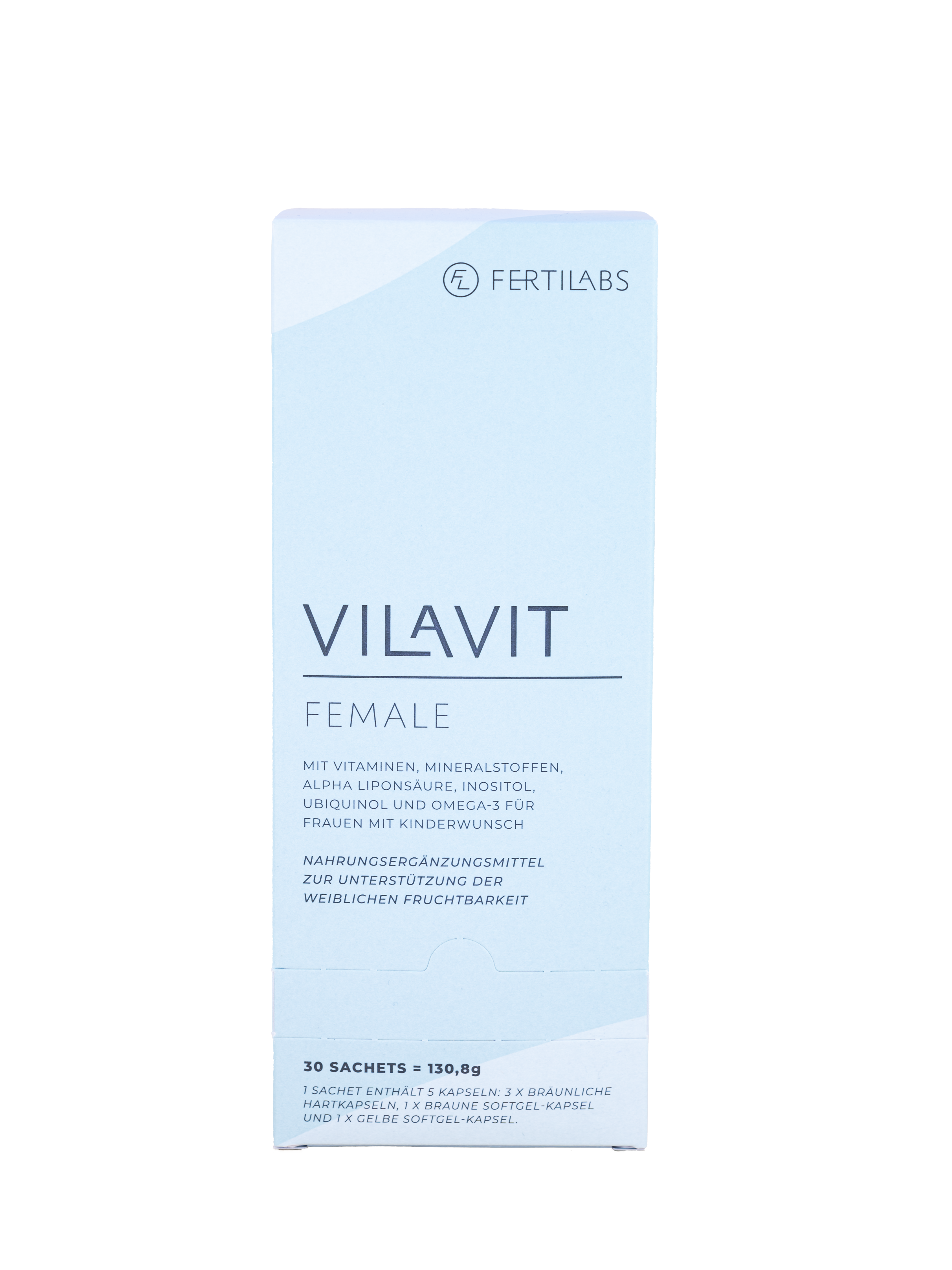


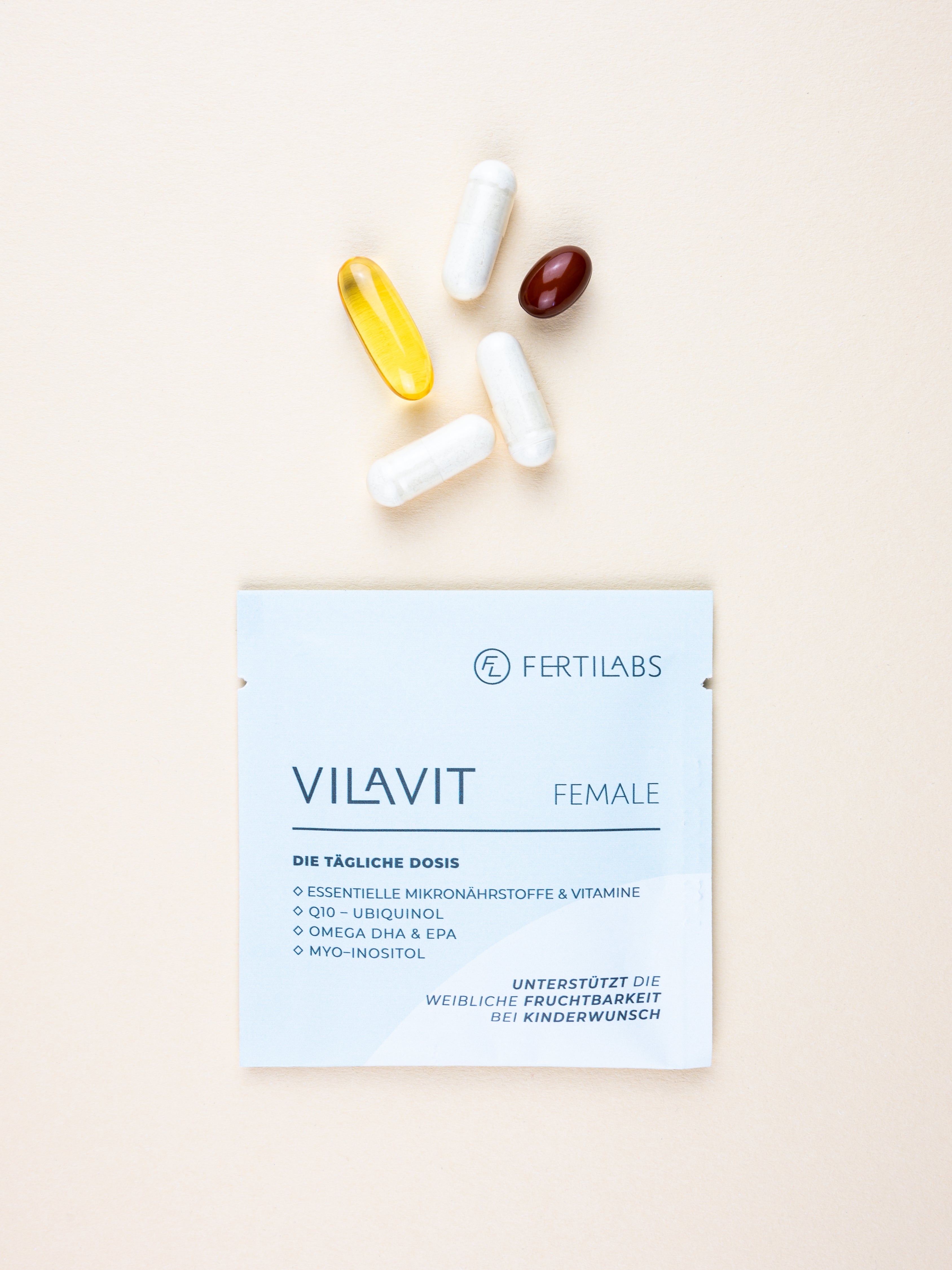
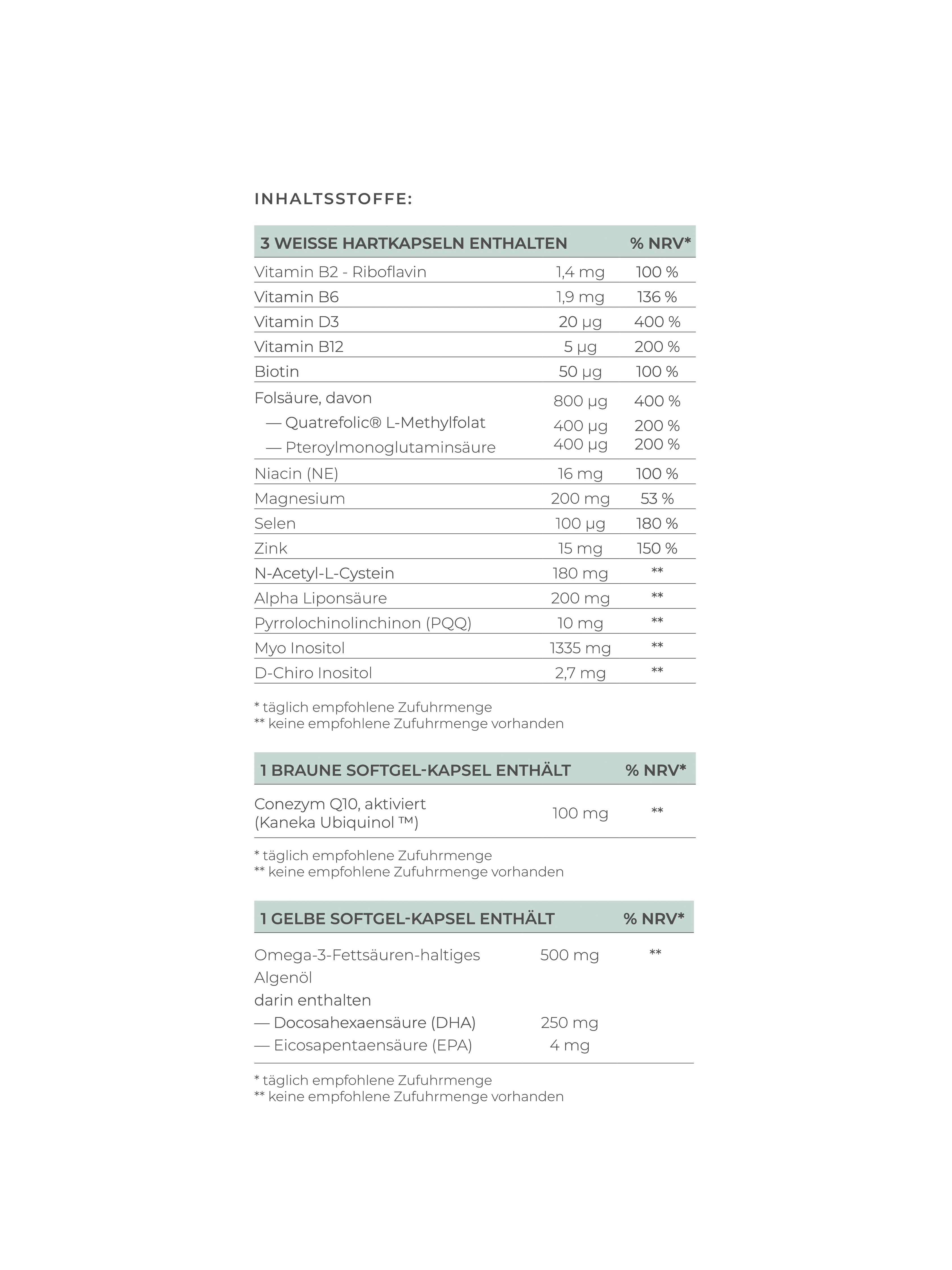
The other half of the equation
In approximately 40% of cases, the cause of infertility lies with the man.
The quality of sperm can also be supported.


